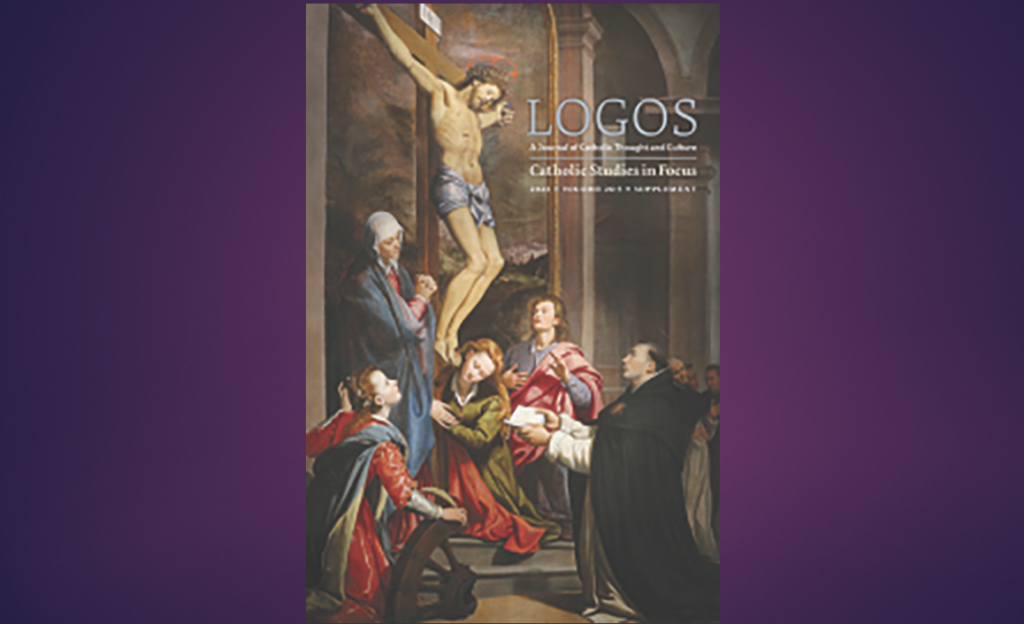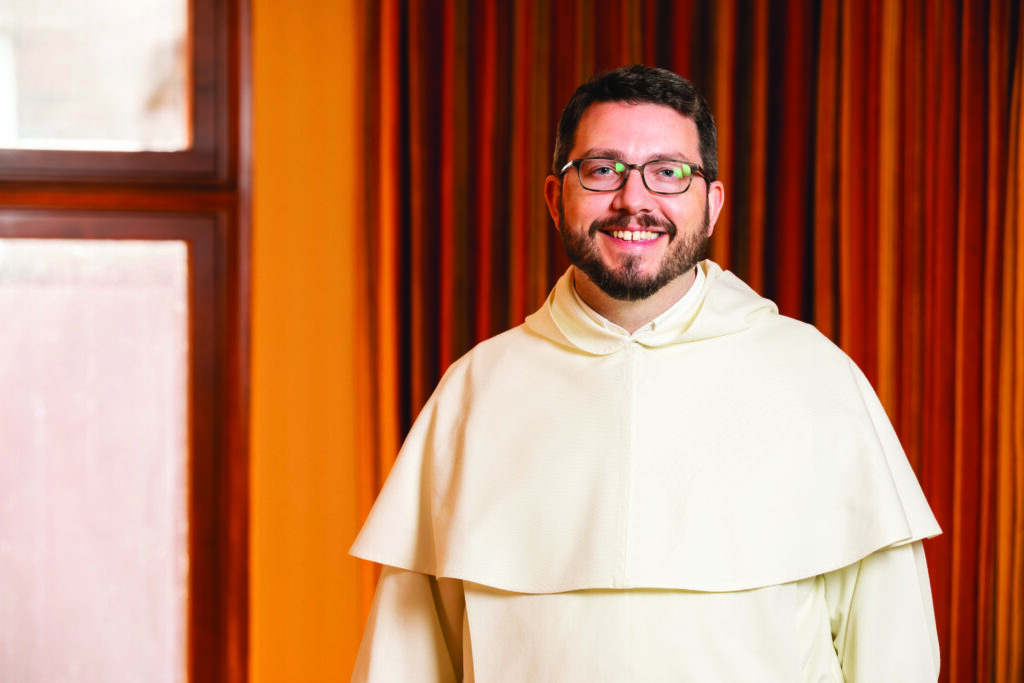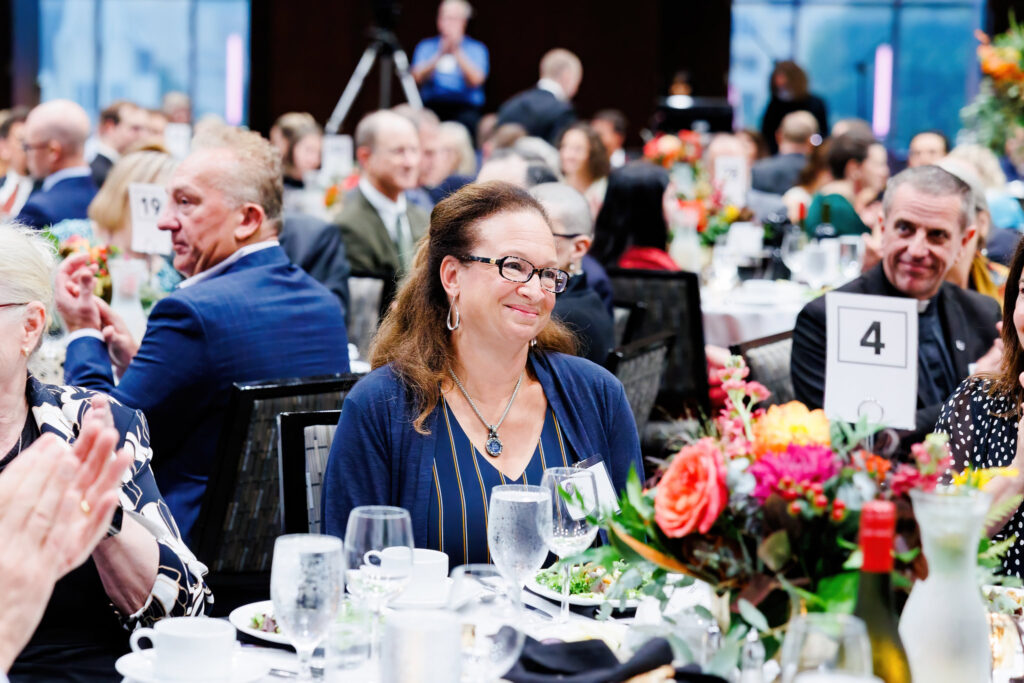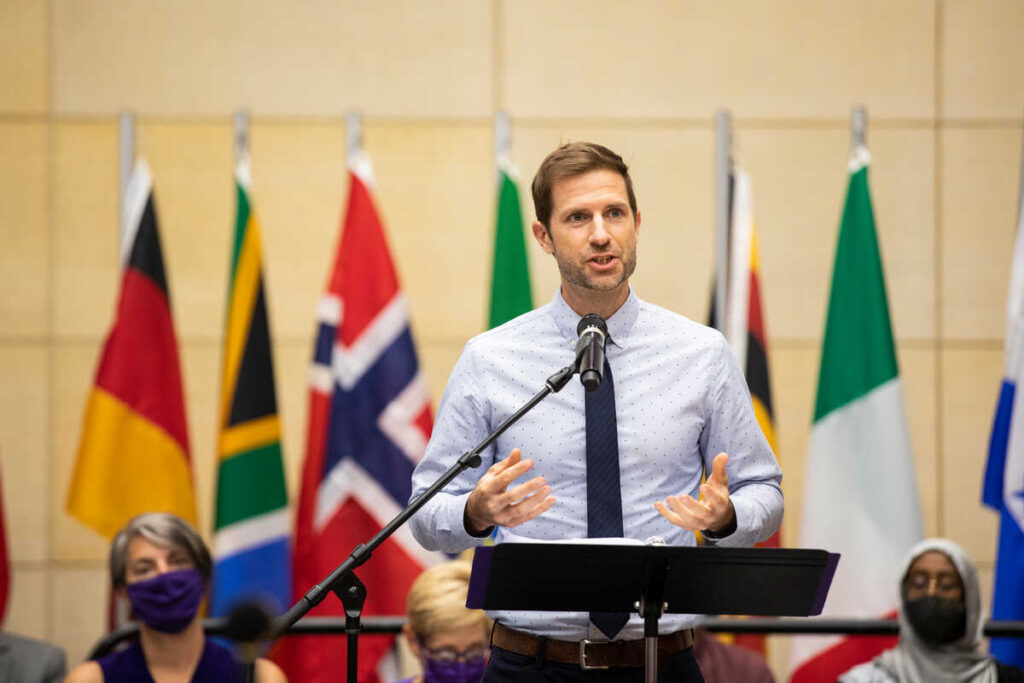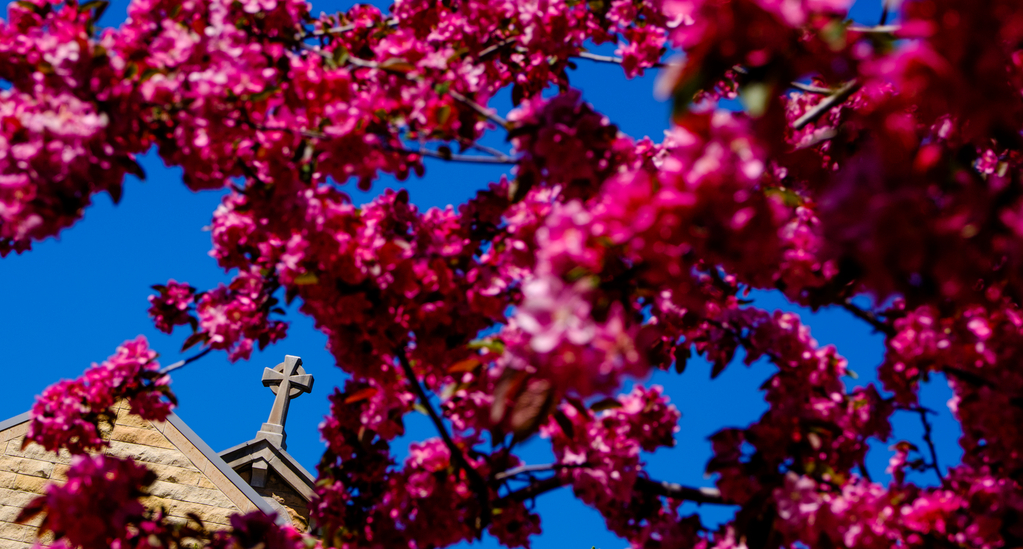We are offering this Mass for Father Wellisch, praying that God will grant him eternal rest and everlasting life. In the prayers of the Mass for a priest who has died, we ask in particular that Almighty God will “grant His servant and priest to rejoice forever in the vision of the mysteries which he faithfully ministered here on earth.” And then there is this prayer to the Lord in these words: “You made him a minister of your mysteries on earth. May he rejoice in the full knowledge of Your truth in heaven.”
Let us follow out now the themes of these two prayers, one about rejoicing forever in the vision of mysteries ministered here on earth; the other about rejoicing in the full knowledge of God’s truth in heaven.
The mysteries referred to are, of course, the sacraments of the Church and pre-eminently the Mass, the Eucharistic sacrifice. A priest is ordained primarily for the sacramental ministry, to offer sacrifice, to nourish and heal Christ’s flock with sacramental grace. In this primary role, Father Wellisch served in many parishes beginning full time at St. Mark’s, later at the Cathedral, and then all through his teaching at St. Thomas he served in various parishes as a weekend associate. In the chapel at St Thomas, he offered one of the daily Masses and witnessed many a marriage – he served the students of the university generously as a priest. Nearly 20 years ago he became chaplain to the local Hmong Catholic community, and within the last year he became their pastor here at St. Vincent’s parish.
And I think here, at St. Vincent’s, we especially see the kind of pastoral priest Father Wellisch was. We read the tribute paid him by one of his flock: “We are like a family that has lost its only parent.” “He would do much more than a regular priest,” one of them said. “He was so goodhearted.” We can see in Father Wellisch the image of the good shepherd, Jesus, who said, “I know mine and mine know me.” As his deacon at St. Vincent’s says of him, “He would go everywhere to assist Hmong families – to their homes, to where they worked, and to the hospitals, even to their birthday parties.” “I know mine and mine know me.”
As Father Wellisch’s friend and colleague for many years, I am well aware of this steady, tireless ministry to all he was given to serve. I never knew him to refuse or to evade a call to some priestly service, unless there was, as often happened, a conflict with some previous call to service. In associhis self-giving life, Father Wellisch demonstrated a certain Christian paradox. Though he was much burdened with work, he was a free man. And that is because true freedom is the freedom to love and to serve. To all who knew him, he had a fine sense of humor, was always cheerful. And that is because, as Mother Theresa assures us, “the fruit of love is service, and the fruit of service is joy.”
So this is our first prayer, now. We ask that this priest who acted his priestly character with such love and zeal – and the priestly character is to act in persona Christi, in the person of Christ, not as a mere instrument or representative, but, as Pope John Paul II says, to act with a “certain sacramental identity with Christ,” as when a priest pronounces the words of Christ to effect the Eucharistic sacrifice, “this is my body … this is the cup of my blood” – our prayer, then, is that the priest whom we commit to the mercy of God today, that as he is no longer ministering the sacred mysteries with faith, he will now “rejoice forever in the vision of these mysteries.” This is the vision of the One present in these mysteries, that vision we call the Beatific Vision, or in the poet John Milton’s translation of the phrase, “the happy-making sight” of God in heaven.
Our second prayer theme, now. It is that God’s minister of mysteries on earth – mysteries now meaning doctrines of the faith – that he may “rejoice in the full knowledge of these truths in heaven.” Father Wellisch preached these truths to all the flocks he ministered to in various parishes and most notably recently with the Hmong, even, with his remarkable gift for languages, beginning to preach to them in their native tongue. He told me how he could do it. He would write out his homily in English, translate it into Hmong, and then from that text preach to them.
But what I want to dwell on now is his ministry of truth to students throughout his many years teaching at St. Thomas. What is a priest doing teaching English literature at a university? One answer is the one any Catholic teacher could give: He is performing one of the spiritual works of mercy, which is to instruct the ignorant, sharing the knowledge one has with those who need it and do not have it. We may find a further answer in two statements on the nature of a Catholic university. One is from an author whose works Father Wellisch taught in his courses, Cardinal Newman, now the Venerable John Henry Newman. The other statement more recent is from the Magisterium of the Church called Ex Corde Ecclesiae.
In his classic treatise on higher education, The Idea of a University, Newman describes the university as a place of liberal learning where all the intellectual disciplines are taught, including theology, with the conviction conviction that knowledge is its own end and that cultivation of the intellect is a most human and desirable good. But a Catholic university is something more because of a presence there of the Church that makes it Catholic. Newman says, “It is not sufficient security for the Catholicity of a university, even that the whole of Catholic theology would be professed in it, unless the Church breathes her own pure and unearthly spirit into it, and fashions and molds its organization, and watches over its teaching, and knits together its pupils, and superintends its action.”
The breathing of a pure and unearthly spirit into the university, the fashioning and molding, the watching over of Catholic teaching – who best does that but teachers who profess the faith and, whatever their discipline, teach in the light of it? Surely this is the case with the humanities and that most human of them which is the literary tradition of the Western world. Literature, from wherever we have it in the world, raises questions that are ultimately religious: What are we as human beings? How ought we to live? What are we here for? And how do we come to terms with those terrible shadows over our life, evil, pain and death? A single tragedy of Shakespeare will raise every one of those questions, and what Newman means is that the teacher in a Catholic university, while focusing on the literary integrity and quality of a given poem, play or novel, will deal with its themes and the questions it raises with the convictions of faith and thereby allow his students to breathe some of that “pure and unearthly spirit” that pervades a truly Catholic university.
Not that this is evangelization as such, which brings us to that second statement I mentioned, the one from Ex Corde Ecclesiae. We do read there that, “By its very nature, each Catholic university makes an important contribution to the Church’s work of evangelization. It is a living institutional witness to Christ and his message … all the basic academic activities are connected with and in harmony with the evangelizing mission of the Church … education offered in a faith-context that forms men and women capable of rational and critical judgment and conscious of the transcendent dignity of the human person.”
The contribution to the Church’s evangelization spoken of here is certainly an indirect kind of evangelization. It is not preaching or catechizing. It takes place in the humanities, for example, when, as I have said, the eternal issues that inevitably arise are discussed in light of faith. Then the witness to Christ and His message is especially the witness of a man or woman who lives that faith. A teacher is not to be confused with a newspaper reporter who relates facts of the day and the opinions of others. With the teacher, a personal influence seasons what he teaches – his love for the subject, enthusiasm for it, and convictions about. These give witness to the truth and value of what he teaches. As G. K. Chesterton puts it, “anyone teaching the young has the responsibility of affirming the truth of our human tradition. That is the one eternal education, to be sure enough that something is true that you dare to tell it to a child.”
I hope you understand why I have been going on at such length on this subject. It is to answer the question, “What is a priest doing teaching English literature in a university?” That is what he is doing. He is serving the Church who placed him there by witnessing to the truth of faith in teaching his discipline and, as a priest, he is there to be uniquely a witness to the presence of the Church in the Catholic university. And I need only add that Father Wellisch understood very well his role and his responsibility as priest and teacher. He taught literature past and present with a great fund of accurate knowledge, experience, and faith. He taught with clarity and grace, he graded freshman papers – a martyrdom for the faith, some would say – and did it with the required patience and skill. Altogether he earned the accolade given to Chaucer’s scholar: “Gladly would he learn and gladly teach.” Our second prayer, then, is that his devotion to truth as priest and teacher will bring him to the “full knowledge of God’s truth in heaven.”
I will conclude now with a poem, one Father Wellisch would take with his students. It’s by the great Catholic poet Gerard Manly Hopkins; its title, “That Nature is a Heraclitean Fire and of the Comfort of the Resurrection.” The first part of the title refers to the ancient philosopher Heaclitus, who thought that “the essence of all matter is fire, and the cosmos is an ever-living fire” since everything in nature is in flux, taking all shapes like a blazing fire, ever changing and ever renewed. In his poem, Hopkins contrasts the restorative powers and undimmed continuity of physical nature with man’s frail, deathridden existence.
After a period of wet, stormy weather, he had gone out walking and had observed how quickly the landscape was reviving under a bright sun and sailing white clouds above. “Million- fueled, nature’s bonfire burns on.” Which is just fine for nature, but what about us whose part in all this flux means that we are going to die? When man, nature’s “bonniest, dearest, clearest- selved spark” is quenched, then “all is drowned in an unfathomable dark. ‘O pity and indignation!’ Death blots us out … vastness blurs and time beats level.” So reads the first part of the poem. But then come these triumphant lines out of the heart of Christian hope:
Enough! the Resurrection,A heart’s-clarion! Away grief’sgasping, joyless days, dejection.Across my foundering deck shoneA beacon, an eternal beam.Flesh fade, and mortal trashFall to the residuary worm; world’swildfire, leave but ash;In a flash, at a trumpet crash,I am all at once what Christ is,since he was what I am, andThis Jack, joke, poor potsherd, patch,matchwood, immortal diamond,Is immortal diamond.
If I may return to the point about the teacher of literature in a Catholic school, this teacher in going over this poem will tell his students: “This is what the poet is saying, do you see?” and he will help them to see and he will hear what they have to say, all along bringing them to experience this poem as the great work of art that it is. And then somewhere in the discussion, he will say: “This is true, isn’t it? What the poet says, that he has an immortal soul which through the grace of God will endure like a diamond, that he will live with God for all eternity and the body too in the resurrection of the dead. The teacher will be sure enough of this truth that he dares to tell it to his students. As we dare and rejoice to tell it now in the presence of this death.
A final word about the poet’s image of the diamond. A diamond is a hard, enduring substance – it has a kind of material foreverness about it – and it is precious and beautiful. As we go on with this Mass we are not celebrating the life of Robert Wellisch. The celebration is reserved for heaven, and we are not there yet; rather, this Mass as the sacramental re-presentation of the sacrifice of Jesus Christ on the cross is a plea, a plea for mercy and forgiveness, for eternal rest, a plea made in the certain hope of resurrection and everlasting life. We can make our prayer, then, from the image of the diamond.
May the precious and beautiful soul of this priest and teacher, through the mercy of God, endure with Him forever.

